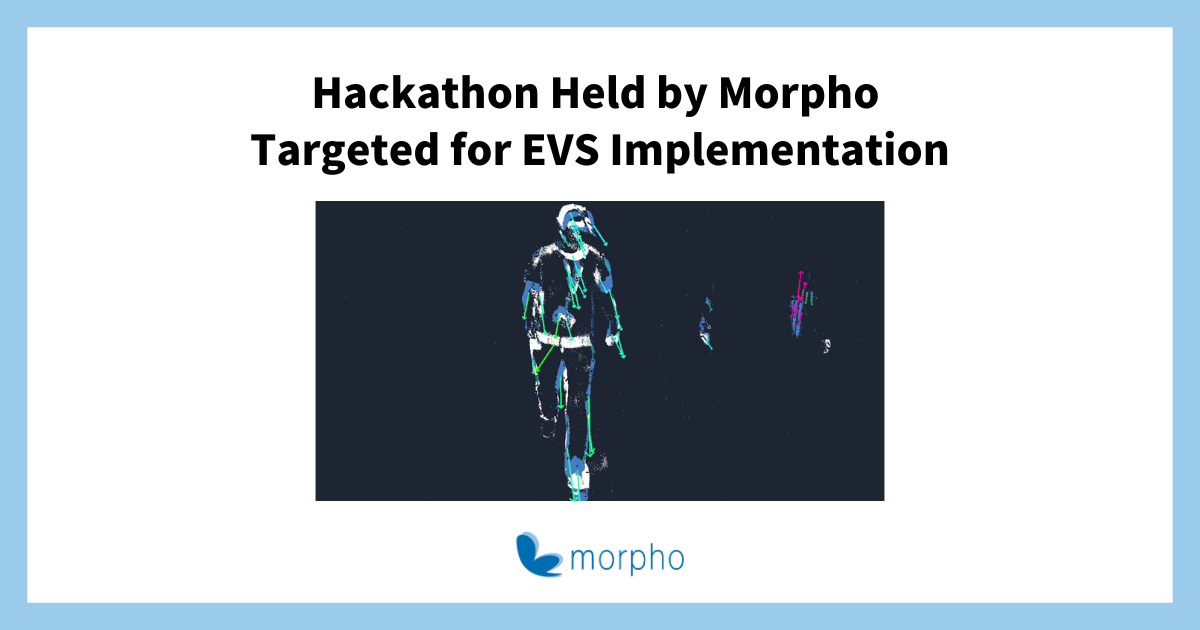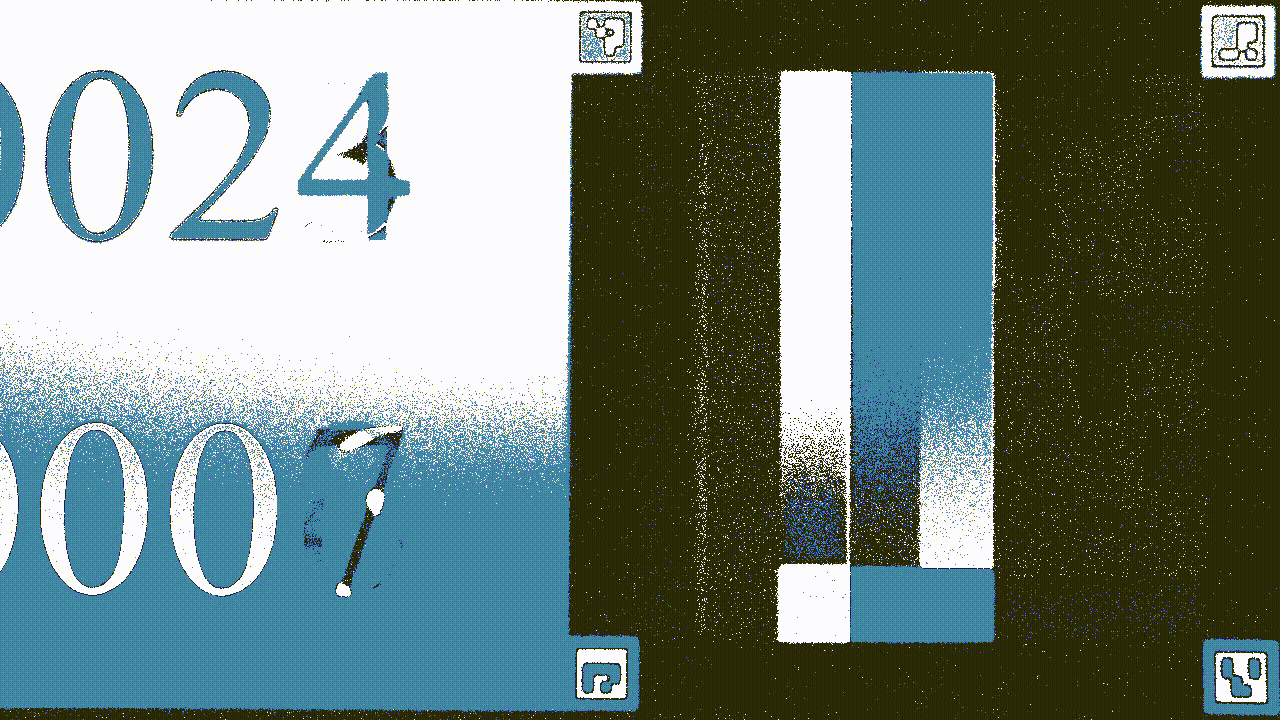Company
IR
Tokyo, Japan – September 4th, 2024– Morpho, Inc. (hereinafter, “Morpho”), a global leader in image processing and imaging AI solutions, held a hackathon event targeted for implementing a cutting-edge vision sensor, EVS (Event-based Vision Sensor, hereafter EVS), into practical use.
With the support of Prophesee, a provider of event-based neuromorphic sensors and AI, Morpho will thrive to develop solutions to issues in our daily lives using EVS and hope to grow them into future businesses.

EVS is an advanced vision sensor that mimics the way the human eye perceives light. Unlike conventional frame-based sensors, EVS outputs event data (coordinates, polarity, and timestamp). Only pixels whose luminance changes due to subject motion or environmental changes are triggered. It is capable of fast detection with low power consumption regardless of the lighting environment. EVS’s performance in practical use, including smartphones, visual inspection, and security fields, is anticipated and is attracting attention recently.
Morpho held this hackathon event with the goal of deepening knowledge of cutting-edge technologies and creating solutions based on new ideas, which will lead to the creation of new businesses in the future.
Three teams (mix of engineers and sales reps) worked on the idea, development, and presentation of results over a period of three months. In addition to lending EVS cameras, Prophesee also participated as a judge.
In this hackathon, each team was asked to come up with an idea for a solution using EVS, develop a prototype, and present it on the final day in the form of a demonstration, based on five criteria: “idea realization,” “presentation,” “technical capabilities,” “market value,” and “originality.
Team1 demonstrated the possibility of real-time optical communication in a casual environment by encoding information such as text into a two-dimensional flickering pattern, making it flicker at high speed on a display, and capturing and decoding it with EVS. The system does not require complicated and dedicated equipment or network connections. Team1’s aim is to pioneer the basic technology as a future method of utilizing EVS.

(Left) EVS acquisition data (Right) EVS acquisition data parallelized and decoded

Gif: Transmitted data (1/60x speed). Binaryization of string is encoded in checkerboard part.
Team2 first focused on a familiar object, “door”, and came up with the idea that EVS could be used to realize smart control, which is difficult with existing sensors.
Through market research, it became obvious that there is significant demand for locking and unlocking doors without physical locks, and for smart automatic door control.
In the former case, facial recognition using RGB cameras is widely used, but there are security holes that can be breached by images of others, 3D masks, etc. Usually, approaches such as using the 3D shape of the face as an authentication factor or combining it with multi-factor authentication are taken. However, there are tradeoffs, such as the cost of installing additional sensors.
On the other hand, there are also solutions for smart control of automatic doors that use RGB cameras in addition to infrared sensors to provide smart control, such as “not responding to a person passing by the door.” However, there are some scenes that RGB cameras are not good at, such as night scene, backlit scenes, or scenes with complex patterns on the floor, and there is also the risk of requiring more power consumption due to the need for video processing.
Thus, Team2 developed the following demonstration application for “highly secure identity authentication” and “smart open/close control of public automatic doors” using EVS only as sensors.
‐ Face recognition by EVS without RGB
‐ Blink detection that uses EVS to distinguish between “actual blinks” and “blinks projected on the monitor
‐ Simulation of door opening and closing using Optical Flow with EVS
Blink detection that uses EVS
Simulation of door opening and closing using Optical Flow with EVS
Because the constant lighting of common areas of condominiums at night was a waste of energy, Team3 developed a prototype of a smart lighting system that could save electricity safely and without strain by utilizing the characteristics of EVS.
Characteristics of EVS
1. Low power consumption (almost 0 power usage when there are no changes)
2. Sensing (detection) possible even in dark scenes
3. Unlike RGB cameras, the movement of a person is captured by changes in luminance, thus protecting privacy.
Smart lighting system using EVS should contribute to the SDGs by enabling a 50-unit condominium to reduce electricity costs by approximately 1 million yen per year (approximately 66% reduction in electricity costs for common areas) and CO2 emissions by approximately 15 tons (According to our survey).
Prototype demo video #1 of Smart Lighting System for Condominiums
“Prophesee has a strong commitment to the developer and maker ecosystem that is helping drive innovation and creativity in the use of event-based vision sensors. Our Inventors Community now numbers more than 15,000 strong worldwide and this collaboration with Morpho is precisely the type of hands-on experimentation and implementation of our technology that will foster even more innovation in enabling machines to see. We are happy to work together with Morpho as we expand the EVS ecosystem and the applications made possible by our Metavision platform.”
Prophesee is the inventor of the world’s most advanced neuromorphic vision systems.
The company developed a breakthrough Event-based Vision approach to machine vision. This new vision category allows for significant reductions of power, latency and data processing requirements to reveal what was invisible to traditional frame-based sensors until now. Prophesee’s patented Metavision® sensors and algorithms mimic how the human eye and brain work to dramatically improve efficiency in areas such as autonomous vehicles, industrial automation, IoT, mobile and AR/VR.
The company is driven by a team of over 100 visionary engineers, holds more than 50 international patents and is backed by leading international equity and corporate investors including 360 Capital Partners, European Investment Bank, iBionext, Intel Capital, Omnivision, Prosperity7 Ventures, Renault Group, Robert Bosch Venture Capital, Sinovation, Sony, Supernova Invest, Xiaomi.
Learn more: www.prophesee.ai